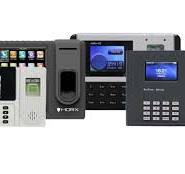Access control devices have become an essential component in ensuring the security and safety of various facilities and premises. These devices play a crucial role in regulating entry and exit points, allowing only authorized individuals to access restricted areas. With advancements in technology, access control devices have evolved to offer enhanced security features and functionalities.
One of the key benefits of access control devices is the ability to manage and monitor access permissions efficiently. By using these devices, administrators can easily grant or revoke access rights for employees, visitors, or tenants based on their roles or clearance levels. This not only helps in preventing unauthorized entry but also enables organizations to maintain a secure environment.
Modern access control devices come equipped with a variety of authentication methods such as key cards, biometric scanners, PIN codes, or even facial recognition technology. These advanced authentication mechanisms add an extra layer of security by ensuring that only authorized individuals can gain access to sensitive areas.
Furthermore, access control devices offer real-time monitoring capabilities, allowing administrators to track entry and exit activities remotely. In case of any security breaches or suspicious incidents, alerts can be immediately sent out for prompt action. This proactive approach helps in preventing potential threats and mitigating risks effectively.
In addition to enhancing security measures, access control devices also contribute to improving operational efficiency. By automating the process of granting access permissions and generating detailed reports on access activities, organizations can streamline their security management processes and reduce administrative overheads.
Overall, access control devices have become indispensable tools for modern businesses and institutions looking to bolster their security infrastructure. With their advanced features, ease of use, and scalability options, these devices provide a comprehensive solution for managing access control requirements effectively.
Enhance Security with These 5 Essential Tips for Access Control Devices
- Regularly update access control device firmware to ensure security patches are up to date.
- Implement two-factor authentication for an added layer of security.
- Restrict physical access to the device to authorized personnel only.
- Monitor and log access control device activity for auditing purposes.
- Train employees on proper usage and security best practices when using the device.
Regularly update access control device firmware to ensure security patches are up to date.
It is crucial to regularly update the firmware of access control devices to ensure that security patches are up to date. By keeping the firmware of these devices current, organizations can mitigate potential vulnerabilities and enhance overall security measures. Regular updates help in addressing any identified security loopholes and ensure that the access control system remains resilient against evolving threats. By staying proactive in updating firmware, businesses can maintain a robust security posture and safeguard their premises effectively.
Implement two-factor authentication for an added layer of security.
Implementing two-factor authentication for access control devices can significantly enhance the security measures of a facility. By requiring users to provide two forms of identification before granting access, such as a password and a fingerprint scan or an access card and a PIN code, organizations can establish an additional layer of protection against unauthorized entry. This approach not only makes it more difficult for potential intruders to gain access but also adds an extra level of assurance that only authorized individuals are allowed entry to restricted areas. Two-factor authentication is a robust security measure that can greatly strengthen the overall security posture of any facility.
Restrict physical access to the device to authorized personnel only.
Restricting physical access to the access control device to authorized personnel only is a crucial security measure to prevent unauthorized tampering or manipulation of the system. By limiting physical access, organizations can ensure that only designated individuals with proper clearance are able to interact with the device, reducing the risk of potential security breaches. This practice helps in maintaining the integrity and confidentiality of the access control system, ultimately enhancing overall security measures within the facility.
Monitor and log access control device activity for auditing purposes.
Monitoring and logging access control device activity is a crucial tip for maintaining security and compliance standards. By keeping track of all access control device activities, including entry and exit events, access attempts, and system configurations, organizations can create a detailed audit trail for accountability and transparency. This logging feature not only helps in identifying security breaches or unauthorized access but also ensures that any suspicious activities can be investigated promptly. Additionally, having comprehensive logs of access control device activity enables organizations to meet regulatory requirements and demonstrate compliance during audits or investigations.
Train employees on proper usage and security best practices when using the device.
It is essential to train employees on the proper usage and security best practices when using an access control device. By providing comprehensive training sessions, employees can learn how to operate the device correctly, understand the importance of maintaining security protocols, and recognize potential security risks. This proactive approach not only ensures that the access control device is used effectively but also helps in fostering a culture of security awareness among employees, ultimately strengthening the overall security posture of the organization.


